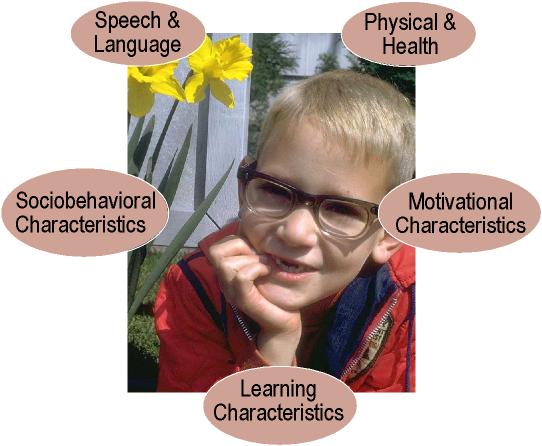| ESE424 : The Class : Students : Mental Retardation: Characteristics | |||||
Characteristics of Individuals with Mild Mental Retardation
Children with mild mental retardation, as a group, will demonstrate a similar set of characteristics. This is not to say that all children, or even most of the individuals with mild mental retardation, will show all these characteristics. Nor will all children demonstrate these characteristics to the same degree. As with all individuals, there is a great deal of variation across children with mild mental retardation.
One of the dangers of learning about general characteristics of children with mental retardation is that you will use them to shape your expectation of the student. As your book indicates, a vicious cycle, such as the one below, can develop.

In this cycle, the student repeatedly fails at an academic task. This causes the student to lower their expectations of their abilities which leads to decreased effort when attempting similar learning tasks in the future. This part of the expectation cycle is well documented in special education. In this model, however, the teacher's expectations are also influenced. The teacher sees the repeated failure on the part of the student and lowers his or her expectations. In an attempt to prevent failure in future tasks, the teacher (substitute parent, boss, friend) reduces the type, variety, or amount of work the student is expected to complete. The student sees this and lowers their expectations....And the cycle repeats in a constantly downward cycle.
How do you prevent this? Keep an opened mind. Use the information below as a way of understanding some of the behaviors of a student with mild mental retardation. Do not use this information to excuse the student or to justify their lower performance. This information is valuable as a tool in planning how to educate a child with mental retardation.
Characteristics of Children with Mild Mental Retardation
Your textbook presents an extensive listing of characteristics of children with mental retardation on pages 59-73. In this lesson you will see how some of these characteristics may effect a child with mild mental retardation. Let me introduce you to Tommy. I have added a few that your text did not allude to in its discussion. I have also highlighted common characteristics of children with mild mental retardation.
Tommy is 9 years old. The cause of his mild mental retardation is unknown. He attends his local elementary school, attending regular classes for special subjects (music, art, physical education), science, math, and homeroom. He goes to a resource program for reading and written language assistance during the regularly scheduled times for these subjects in his regular class.
To learn more about some of Tommy's characteristics, click on each button.

Once you have completed this lesson, you should:
Go on to
Activity: Case Study
or
Go back to The Class
Page
E-mail the instructor at Larry.Gallagher@nau.edu
Web site created by the NAU OTLE Faculty Studio
Copyright 1998 Northern Arizona University
ALL RIGHTS RESERVED
